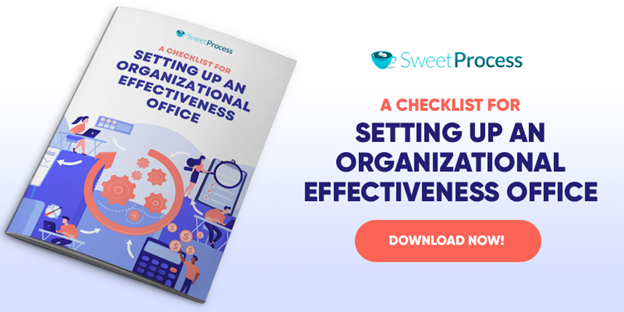Last Updated on February 7, 2025 by Owen McGab Enaohwo
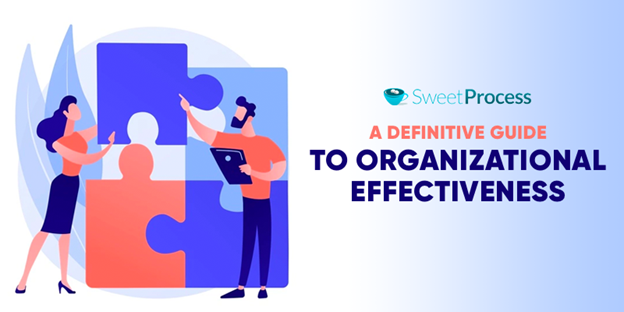
What does being effective in your business mean to you? Is it when you see rapid growth? When all your processes are running optimally? When your customers are satisfied with your products and services? Or when you spend less time accomplishing your goals?
Effectiveness means different things to different people. There are standards to being effective and one can say they are effective when they meet these standards. Companies are always looking at how to be better, how to get more customers, how to make more sales, how to remain relevant in the market space, and most of them don’t know how to go about this.
This article will help you learn what it means to be effective and how being effective in your organization is going to help you reach most of your targets and see a steady rise in goals accomplished. You’ll also learn various ways to be effective and how to measure your organization’s effectiveness.
Chapter 1: Definition of Organizational Effectiveness
Chapter 2: Why Organizational Effectiveness Matters
Chapter 3: Factors That Impact Organizational Effectiveness
Chapter 4: Steps of Organizational Effectiveness
Chapter 5: Elements of Organizational Design
Chapter 6: The Seven Effectiveness Models
Chapter 7: Approaches of Evaluating Organizational Effectiveness
Chapter 8: How to Measure Organizational Effectiveness
Chapter 9: Strategies to Improve Organizational Effectiveness
Chapter 10: The Need for an Organizational Effectiveness Office
Chapter 11: Why Employee Trust is Important
Chapter 12: Organization Effectiveness Companies
Chapter 13: SweetProcess Can Make Your Organization More Effective
Chapter 1: Definition of Organizational Effectiveness
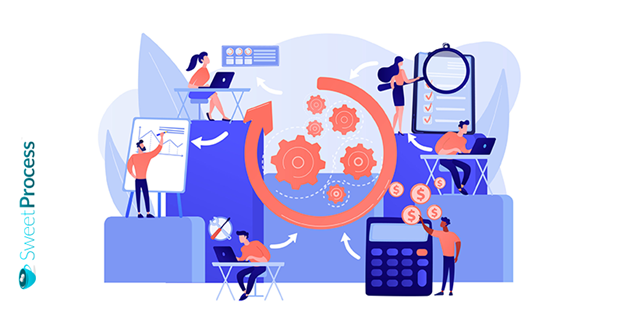
The process by which an organization can meet its goals efficiently is referred to as organizational effectiveness. It involves how efficient an organization’s process is at producing its target quota of products and services. Organizational effectiveness is a business strategy that is designed to improve the efficiency of a company without reducing the quality of the products and services.
An effective organization is one that is successful and has a higher likelihood of survival. Attaining effectiveness is an ongoing process, like the continuous improvement process. It is learned and practiced continuously. Constant revision and assessment are carried out to learn what works and what does not and to keep improving. Using the right strategies and tools to accomplish organizational goals is the key to organizational effectiveness.
Differences Between Organizational Effectiveness and Efficiency
To be effective is a different practice from being efficient. They look like they should mean the same thing but they do not.
Effectiveness is how well your team can follow work procedures to achieve set goals. When you aim for something and you get it precisely right, what you did was effective.
Efficiency is how well your employees can accomplish tasks without wasting time, effort and resources—how you can use fewer resources, less time and less money to achieve the same goal.
You become more efficient when you reach your targets effectively and more quickly. Efficiency requires effectiveness.
As an illustration: You set a goal to produce and deliver a certain amount of goods to customers. You hit that goal three weeks after you set it. The processes and strategies you followed to achieve that goal were effective. Now, if you’re able to produce and deliver that same number of goods in two weeks without expending more resources, you’ve become more efficient.
Chapter 2: Why Organizational Effectiveness Matters

Just how important is organizational effectiveness? Why do you need to be effective as an organization to grow? An effective organization is less likely to be caught by surprise by unforeseen circumstances; it will always be setting goals that are relevant to the times and striving to achieve them. Here are reasons why organizational effectiveness matters.
Better Management
Organizational effectiveness ensures that there is better management of your business. With duly updated policies, and increased communication between managers and employees, management can only get better. When you are effective as an organization, other things fall into place. There is little room for errors as you always seek ways to improve and be better. Organizational effectiveness gives you a better hold on the affairs of your organization.
Decreased Cost
When an organization is effective, its costs will naturally decrease considering how efficient the organization is becoming. Wastes will be minimized and inefficient workflows will be removed. By aiming for efficiency and effectiveness, you look for ways to achieve your goals without spending more than is required and it cuts costs automatically. With feedback from customers, you know what they want. Wasting time and resources has become a thing of the past.
Improved Customer Relations
Organizational effectiveness builds customer value and builds better relationships. A business’s ultimate goal is to serve its customers as effectively as possible. When you’re aiming for effectiveness as an organization, you put your customers into top consideration. Through feedback from them, you get their opinions on service and this lets you put their needs at the forefront of your organization’s goals. So when you’re working toward your goals, you know what your customers need. Everybody is working in the same direction and toward the same goals. Your customers will be happy and satisfied as you end up delivering quality products and services.
Improved Organizational Value
Organizational effectiveness helps you achieve your organization’s goals using the optimal levels of time, energy and resources. Your business factors will be aligned to achieve the same goal, which means that your organization’s value will be upheld and what your organization stands for will constantly be what you try to deliver. This will go a long way in building your company’s reputation. Business managed effectively means more business for you because you are getting a lot of exciting and helpful reviews from your satisfied customers. The organization gets better at achieving its goals.
Better Employee Performance
An effective organization takes into consideration the performance of its employees. How can they be better at their jobs? By clearly giving them the information they need, proper tools they need to perform well, appropriate rewards and incentives, their performance should continually improve. As part of its principles, organizational effectiveness requires that you carry your employees along when you work toward a more effective and efficient organization so that there will be a seamless flow of everyone working together to achieve the same goals. Equipping your employees with your company’s goals in advance will improve their performance. Goal setting can enhance the performance of workers because it lets a worker know exactly what is expected of him or her. Employers need to give workers a clear direction when it comes to goal setting as it makes it easier to work toward meeting and exceeding expectations.
Better Use of Technology
An effective organization incorporates the use of technology to make work easier and faster. These tools assist in employee training, keeping everyone updated, improving and simplifying digital workflows, and updating business processes, among other things. Not just any technology will do. Look for technologies that are simple to use and integrate well with other technologies. Get tools that your employees will not be scared to use and that can protect the information stored.
Listen to this YouTube video to learn more:
Chapter 3: Factors That Impact Organizational Effectiveness
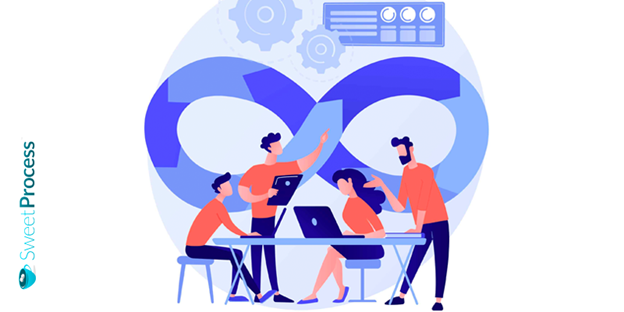
Several factors affect an organization’s effectiveness. These variables can be grouped into causal, intervening, and end-result variables.
Casual Variables
Causal variables refer to independent variables that can be altered by the organization. Variables such as its policies, required skills and behavior, business strategy and leadership strategies. It describes the course of development within an organization.
How well thought out and enforced are the organization’s policies? Organizational policies outline what practices an organization views as acceptable in particular situations. It indicates what is noticed, rewarded and criticized. These policies affect employee behavior and ultimately affect effectiveness. An organization’s policies should be documented and easily understood by employees.
Does your organization have the required talent needed to handle the jobs that should be done? When you hire people, you need to train them so that they fit in the organization’s new culture. This will make them competent in handling their jobs. Competency increases effectiveness. Proper training will ensure that staff members will need less supervision from superiors, thereby boosting effectiveness.
A strategy is a long-term plan you develop for your business to achieve the desired future goals. An effective business strategy should be adaptable enough to deal with changes in the environment, both internal and external. A good survey helps you come up with an effective strategy. It should be clearly defined for it to become an effective driving force for achieving its goals.
How do the leaders set a good example? Are they good at their jobs? Are they committed? How do they treat their employees? A good leader is honest, has integrity, communicates effectively, listens to others, inspires, and respects workers.
Intervening Variables
This refers to motivation, (salaries, working conditions, sense of belonging) performance, goals, attitude, loyalty and perception of the employee, capacity for efficient decision making, communication and interaction within the organization. Intervening variables show the health of an organization.
How do employees feel about working in your organization? Do they have the right motivation to work? The tools for them to carry out their tasks efficiently and effectively need to be provided. Working conditions should be favorable and supportive and not cause inconveniences or harm.
Your workers should be duly compensated for their work. Rewards should be given and promises kept. Give workers good reasons to be loyal to you and your organization. Management and workers need to work as a team. Leaders are to make and effect decisions quickly. Striving for a healthy working environment increases productivity.
Result Variables
These are organizational waste, loss, earnings and productivity. It shows the achievements of an organization. At the end of a production cycle, how much waste was recorded? How much was lost and gained?
Periodically check for ways your processes can become more efficient. Ask employees who are better skilled at what they do or have more experience than others to share tips on how they get work done quickly and correctly. Outdated processes should be updated.
Chapter 4: Steps of Organizational Effectiveness
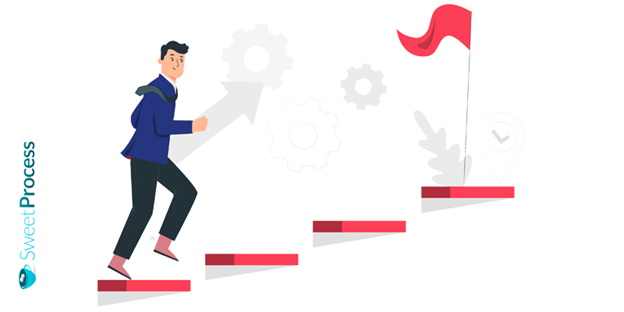
This chapter will show some key areas where you can be effective in your organization to help you ensure your organization is doing its best to meet its clients’ needs.
Leadership
Good leadership affects effectiveness. Leaders create clear vision, goals and objectives and build a strong team. Leaders need to understand the strengths and weaknesses of different professionals on their team before they make a plan of action meant to improve the effectiveness of the organization. Organizational leadership demands effective participation in the decision-making process and commitment.
Leaders help employees understand the business strategy and contribute to the achievement of the organization’s business objectives. They share information about the organization with the employees for their benefit and guidance. When leaders are open to workers, it instills belief and confidence in them.
Communication
Effective communication keeps focus on the main goals and helps you to avoid errors. Communicating ensures an even spread of your organization’s goals, guidelines and aspirations. Many employees don’t know what their organization stands for because of poor communication. This makes it harder to achieve your goals as it would be hazy. Communicating effectively solves this problem.
Accountability
Individuals should be accountable for the objectives and tasks they’re involved in. Project managers should uphold other employees to complete their tasks and responsibilities. Make sure they deliver on commitment. Rewards and incentives should be given when due. Discipline should be administered to uphold the values of the company.
Delivery
These are the means and methods used to deliver products and services. Use efficient delivery systems that are simple yet effective. Your delivery process doesn’t have to be long. Errors are inevitable that way. Shorter processes make delivery time quicker. Keeping it simple, or as simple as possible, is the key to achieving results.
Performance
Employee performance is critical to the overall success of the company. Hire, train and develop the right people for your job. Skilled, motivated employees are more engaged, more productive, and more profitable. Keep track of employee performance. Cultivate a positive work environment by rewarding high-performing employees with incentives and group recognition during meetings.
Culture
This is the internal and external context of your organization. The nature of the organizational culture determines the degree to which the desired results from the employees are obtained. It includes your mission, vision and values. Define your organization’s culture and goals for your team. Your culture should be documented and communicated frequently to support improvements. A strong organizational culture contributes to better employee performance.
Measurement
Measure and analyze your projects and processes. Track operations, opportunities and improvements. This is why your goals need to be measurable. Measuring organizational effectiveness through the right metrics helps you stay accountable.
Listen to Edward explain these steps:
Chapter 5: Elements of Organizational Design
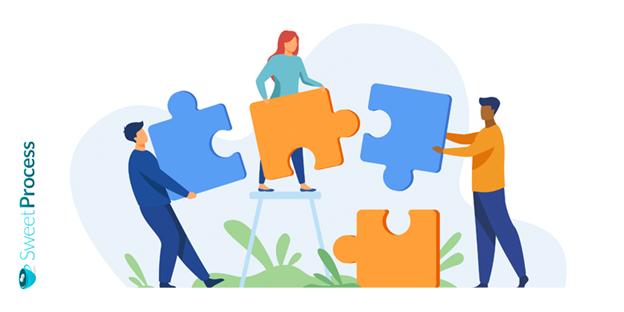
An organization design is a step-by-step method that identifies aspects of workflow, production and systems within a company or organization. This design can affect its workplace culture, efficiency, workplace relationships and production value. Preparing this design for effectiveness involves considering a variety of elements. There are six core elements of an organization’s design.
- Strategy: This involves the way an organization plans to grow and participate in its market and how leaders describe their purpose. An organization that wants to be effective should focus on its strategy first. Successful organizations effectively align their strategies, people, processes and culture to achieve their vision.
- Environment: This is the internal and external context of the organization. Context such as the economy, government regulations, corporate transformation and culture. The organization considers the presence of its competition and how to stay ahead.
- Work requirements: These are activities needed for an organization to operate. It includes learning and professional development strategies, competency development, coaching and performance management. When the management of the company is clear in what they expect from their employees, each one can focus on their task thereby gaining special skills and experience that can help them improve.
- Structure: This is the organizational form that coordinates how work is done. People can coordinate and work well together across your organization. The capabilities of your employees aren’t what you consider first before work requirements. The work requirements should determine who you employ.
- Talent: These are members of the organization who possess and use needed capabilities to accomplish work. Your team should have the right skills and behaviors to meet the demands of your organization. The design of an organization should be easy enough to facilitate the productivity of employees and management. Anticipate how the design’s implementation will affect your organization. Define your needs and hire the right people. Anticipate the need for additional staff and begin recruitment and hiring before the need arises.
- Process: These are the systems and procedures that monitor and facilitate the flow of work. Don’t expect 100% perfection. Position your organization to provide effective and efficient quality service through organizational operation processes and policy designs. Working conditions should be well defined.
Chapter 6: The Seven Effectiveness Models
The organizational effectiveness model you choose will depend on the structure of your organization, the culture, people and its values.
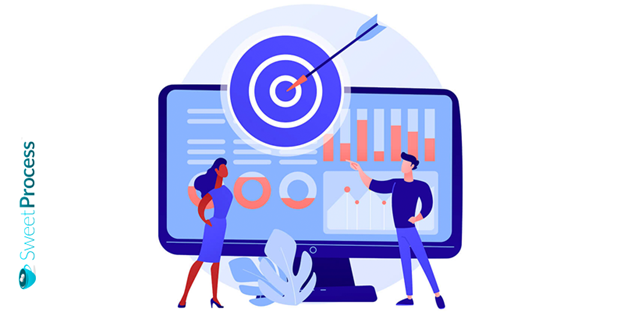
Goal Model
In this model, effectiveness is measured by measuring the degree to which an organization reaches its set goals—goals that are identifiable, measurable and time-bound. That is the organization’s output. Effectiveness is seen with respect to the organization’s internal objectives and performance, the degree of goal attainment achieved by the organization. There should be a general agreement on the specific goals, and the people involved should feel committed to fulfilling them.
The Internal Process Model
Effectiveness is measured by looking inward at the organization and not at its output—the internal mechanism of the organization. The way an organization can run its affairs, conducting smooth and efficient operations while minimizing strain, determines its effectiveness. It also means that the organization is internally healthy and efficient and the internal processes and procedures in the organization function well.
The Resource-based Model
This model of effectiveness considers the input as the means for measuring effectiveness. It assumes organizations must be successful in obtaining and managing valued resources to be effective because strategically valuable resources give an organization a competitive edge.
The Strategic Constituency Model
Here, a company’s effectiveness is measured by how it can satisfy those around it who can threaten the organization’s survival. It focuses on the groups that have a stake in the organization such as suppliers, vendors and customers. (All the people who are somehow connected to the organization). By satisfying the demands of these, effectiveness is met.
Stakeholders Approach
The stakeholder approach emphasizes the importance of considering the different interests held by different groups of people within and outside the organization who each play a part in the organization’s continued success. In this model, achieving success is not easy because many people want different things and it is not easy to satisfy them.
Competing Values Model
The competing values model measures effectiveness by an organization’s ability to promote and reconcile competing values. It requires an organization and its top managers to simultaneously perform contradictory and paradoxical roles.
The Abundance Model
The abundance model equates effectiveness to revealing the highest potential of human systems. To push the potential of the human system, both positive and negative elements are required.
Chapter 7: Approaches of Evaluating Organizational Effectiveness
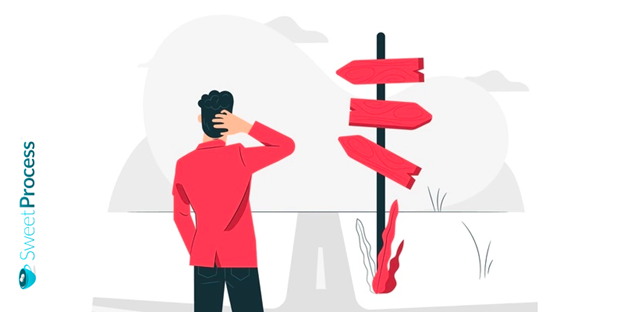
There are also several different approaches to evaluate your organization’s effectiveness.
External Approach
The external approach evaluates the organization’s ability to secure, manage and control scarce and valued skills and resources such as skilled personnel, capital and raw materials.
Set effectiveness goals by doing the following:
- Obtain high-quality input of raw materials and employees.
- Increase market share.
- Increase stock price.
- Gain the support of stakeholders.
Internal Approach
The internal approach evaluates the organization’s ability to be innovative and function quickly. It focuses on minimizing strain, integrating individuals and the organization, and conducting smooth and efficient operations. In this approach, effectiveness is the capability to get better at internal efficiency, coordination, commitment and staff satisfaction. Other aspects such as resources, outputs and satisfaction of clientele or participants are ignored. There is a clear linkage between the internal processes such as decision making and staffing and desired outputs.
To be effective, you should:
- Cut decision-making time.
- Increase the rate of product innovation.
- Increase coordination and motivation of the employee.
- Reduce conflict.
- Reduce time to the market.
Technological Approach
The technological approach evaluates the organization’s ability to convert skills and resources into goods and services.
To achieve effectiveness goals, you should:
- Increase the quality of products.
- Reduce the number of defects.
- Reduce the cost of production.
- Increase customer service.
- Reduce delivery time to the customer.
System Resource Approach
The systems resource approach focuses on input and the extent to which an organization can acquire the resources it needs. It sees an organization as an open system. It emphasizes inputs over output. It focuses on the organization’s ability to obtain necessary resources from the environments outside the organization. That is, how it exploits its environment in the acquisition of scarce and valued resources. Managers are to consider the organization not only as a whole but as a part of a larger group as well. The idea is that any part of an organization’s activities affects all other parts.
The system resource approach has the following benefits:
- Enhance the bargaining position of your organization.
- Understand the relationship among each one of the separate processes of your system and how they interrelate to form a complete system.
- Organize the system in order to achieve the goal in the most efficient way possible, with a clear plan that can be implemented by relevant parties.
Watch this YouTube video to learn more:
Chapter 8: How to Measure Organizational Effectiveness
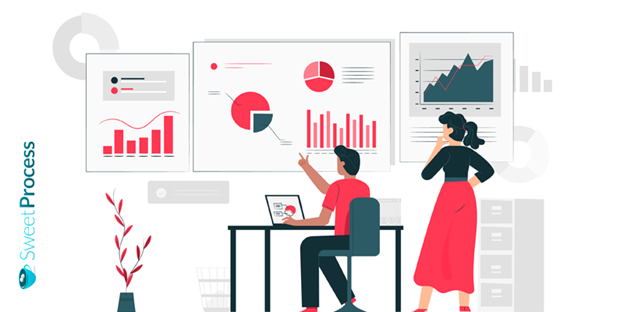
As you apply your effectiveness strategies, you’ll need to re-evaluate and keep track of progress on how effective the organization has become and how to improve. To measure your organization’s effectiveness, follow these steps.
Check Feeder Sources
This means key paths and roles that you determine to lead to your next stage of the plan. If you are successful at one stage, you proceed on to the next. Skipping an essential stage to get to your goal may not give a permanent result.
Calibrate With Metrics
What are your key performance indicators (KPIs)? Choosing the right KPIs relies upon a good understanding of what is important to the organization. It is the monitoring and reporting process. Set new performance expectations and metrics to promote collaboration and deliver the required changes.
Activity Domain
These are the activities you’re basing effectiveness on, like goal realization, stakeholder satisfaction, financial return, and employee loyalty. It also includes how successfully an organization meets its targets, and the speed in attaining the goal, cost-efficiency and productivity.
Perspective
Determine from whose perspective your organization’s effectiveness will be measured. Will it be from the employee’s perspective? Customer perspective? Shareholders’, societal, or employee perspective?
Level of Analysis
Measure the impact of your strategies on the individual, group, departmental, organization and industry level.
Time Frame
What is the time frame used for the analysis? Set a time frame for achieving your goals. For instance, measure the time spent on various stages of manufacturing before and after investing in the latest tech.
The Frame of Reference
How can you know you’re succeeding at being effective? What can you compare your organization’s present state with? Measure sales differentials before and after implementing an organization effectiveness strategy.
Chapter 9: Strategies to Improve Organizational Effectiveness
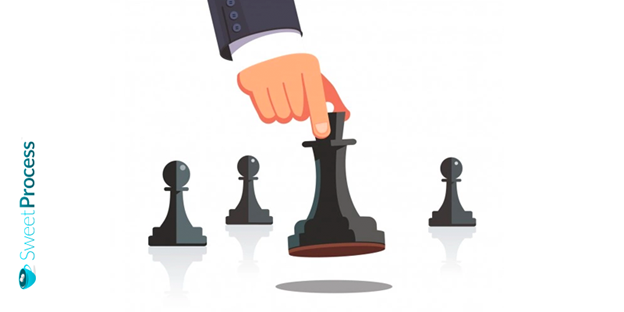
Focus on these areas to improve your organization’s effectiveness.
Grant Autonomy at the Frontline
Employees need the freedom to carry out their work effectively. Empowering your team to make decisions without lengthy approval processes helps them develop and grow. Your employees need the right working environment to perform optimally. They should be able to act on their feet and deliver.
Recognition and Rewards
Reward people for jobs done well. Doing this encourages employees to continue behaving in the same way. It also enhances the sense of being a valued member of a group.
Clear and Defined Goals
Most organizations’ goals are unclear. This makes their strategies and operating models to be misaligned, resulting in the delivery of substandard goals. Define where and how work gets done and get everyone on the same page.
Use Better Technology
Using advanced technology gives you a competitive edge. It makes things less complicated. Use suitable tools to keep teams updated. The tools and technology your organization uses will affect the organization. Select the right ones to execute tasks.
Improve the Employee Experience
How your employees act affects your company’s productivity and output. If they have a good experience working for your organization, effectiveness will be improved. Fostering a healthy organization will make things flow smoothly for staff.
Increase Business Processes Efficiency
An improved business process will result in an improved organizational process. Seek business advice from professionals on how to improve your products and services. Discuss ways to reduce the time needed to hit your targets without reducing quality. Reduce waste by using better tools.
Focus on the Customer
Put your mind to serving your customers better. Request for them to fill in surveys. Encourage them to leave feedback on products and services provided. These steps will increase the quality of your products and services and help ensure that they meet your customers’ expectations.
Chapter 10: The Need for an Organizational Effectiveness Office

Every organization needs an organizational effectiveness office to constantly identify, prioritize, and resolve inefficiencies across the business.
How an Organizational Effectiveness Office Operates
An organizational effectiveness office (OEO) operates by performing many duties in the organization. They make sure that discrimination is not condoned in the work environment. They create anti-discrimination policies to emphasize the responsibility of the employer, and anti-harassment policies to emphasize the responsibility of employees.
They investigate any complaint from an employee and make sure that all employees get treated equally and with respect. They find out exactly what the employee’s concerns are and get details. They ensure that workers understand the disciplinary actions that are followed when policies are violated. They make sure that the policies are in line with the laws of the state.
In performing their duties, the OEO is neutral, making sure that they deliver their jobs without any form of bias. Otherwise, when companies don’t deal with bias, they’re going to lose money on discrimination cases and hiring new employees.
They advise leadership and management on how to create strategies that will better help the organization. With the OEO’s whole-company overview, it can ensure that the creation of new systems and processes in one area will have an impact on other related areas.
They measure and track progress regularly. They’re constantly checking for areas of improvement. These leaders are responsible for designing and delivering solutions to meet targets. They build important capabilities needed to drive and sustain long-term organizational effectiveness.
The OEO usually have a different perspective and their ideas are different. They understand the company culture and offer unique insights that can cut costs, reduce turnover and realign human capital to increase efficiency.
They provide guidance and training to employees and community partners. They also assist in the employment process to ensure compliance.
An organizational effectiveness office coordinates the organization by scanning for misalignment in it. They diagnose areas in need of improvement, design and deliver solutions to drive targeted improvements in line with organizational priorities and measure and track progress.
How to Build an OEO
Follow these steps to build an organizational effectiveness office:
- Have strong leaders. The roles and responsibilities of leaders need to be clear. Leadership is committed to the results of the organization’s needs.
- Grant them authority to make decisions. The right to implement changes should be with the organizational effectiveness office. They should also have the resources to implement change.
- Commitment to ongoing learning and improvement is important. Continue learning and be open to improvement as the businesses’ external and internal environment is constantly changing.
- Have a good strategy. The OEO should be a part of the design-making plans. Designs need to enable the strategy that promotes organizational goals. Effective strategies should align for true transformation and progress to be experienced. Organizations should continually adopt new strategies to meet the circumstances of the changing economy.
Chapter 11: Why Employee Trust is Important

For any organization wanting to be effective, not much can be achieved without understanding the importance of its employees and how to treat them. Your employees are the ones who execute the designs of your organization and as such, they play a very critical role in affecting your organization’s effectiveness.
Having a good relationship with your employees creates a healthy work environment. Trust is needed to build this relationship. A culture of trust in the workplace promotes a strong and healthy working environment. Positive communication is the most important ingredient for trust to grow between leaders and employees.
Having a strong working relationship allows for everyone to share insights, ask questions and do their best work without any fear. When your employees feel that you trust them, it makes them more loyal to your organization and put in their best work. On the other hand, a lack of trust between leaders and employees will inhibit growth. The sense of support will be eliminated along with the ease with which everyone can do their jobs. It will make team members focus on personal interests rather than team goals.
With employee trust comes the improvement of the individual, team and organizational performance thereby allowing team members to work together more effectively.
How to Build Trust
Communicate Regularly
Communicate often with your employees. Keep them updated on company policies and procedures. Whenever there is a change, let them know. Carry them along on important things that happen in your company. Don’t let them feel left out. Your people must be aligned with the vision and strategic direction of your company. Also, encourage communication between you and them. You should be approachable so whenever they have an idea or an observation to share, they can communicate them to you. Also encourage them to talk to other employees, ask for clarifications where they are not clear, and let them know that you listen to them when they speak.
Respect Others
Build your organization in such a way that there is respect for everybody. No one should be treated as inferior to the other person. Whenever someone shares an idea, acknowledge the person for their input. Make them feel that they truly belong on your team. Commend the efforts they put into their work. It will make them want to put more effort into what they do.
Serve Your Employees
Put your team first. Many leaders see their employees as the ones who should be serving them. Help them achieve their goals, and transform their jobs into meaningful work. Provide your people with the information, tools, ongoing training, and support necessary for them to perform their job. Some managers withhold information from their employees as a way to maintain control over them. When you serve your team, they will serve your organization.
Maintain Moral Standards
Your employees should not see you as someone who is above the law. If you have put a rule in place make sure that the leaders follow it through. If there’s a mistake, there should be suitable corrections made for it so it doesn’t reoccur, and if there is supposed to be a reward let it be given. If they notice that you are loose with your moral standards it will make them nonchalant about your policies and values. They should know that your values are important along with your company’s reputation. All of the laws, regulations and policies binding your company should be strictly followed by everyone including management.
Avoid Micromanagement
Give your workers the needed space to do their work. They should not feel as though you are always peering over their shoulders to look at what they’re doing. Micromanagement is the opposite of autonomy. Your workers should have a form of freedom to execute your work without the feeling of them being judged every step of the way. If they do not feel that you trust them to accomplish their work accurately, it’ll lead them to make more mistakes.
Chapter 12: Organization Effectiveness Companies
Some companies specialize in helping other companies achieve effectiveness. A few of them are listed below.
Gallup helps organizations achieve success by designing the most fitting operating model for them. They help to define or redefine your organization’s purpose. By analyzing your organizational strategy and creating cultural alignment with it across all levels, they make effectiveness achievable. Gallup optimizes individual and team performance to deliver on the organization’s strategy. They also provide a strong foundation of structure, systems and processes that support and sustain execution.
Korn Ferry works with leaders to clarify their strategy, then makes the results into an operating model, organizational structure and processes. They are a collaborative and data-driven company that sees that everything the business does adds value to the bottom line by developing an operating model that manages competing priorities.
Oliver Wyman is a company that helps businesses with challenges to achieve the outcomes that matter most. They equip clients to engage and get the best out of their people. They specialize in designing organizations that thrive in disruption and bring science to achieving people and business performance goals.
The Centre is an effectiveness company that has been around for a long time. They design and deliver solutions that are tailored to their clients’ purpose, culture, and unique needs.
This company aims to provide human capital measurement and talent management strategies to promote effective organizations by using their customized solutions. They offer solutions that fit your budget and culture.
People Element helps you achieve and exceed your business goals and increase employee engagement, retention and satisfaction. They focus more on the employee life cycle. They select and onboard the right candidates for your organization, help with employee retaining strategy, allow you to quickly and easily understand and act on employee experience data. People Element enables clients to reach customer satisfaction and productivity, decrease turnover and establish measurable baselines and specific goals.
Talent Edge Group believes that people are the drivers of an organization’s success, and so they focus more on improving the capabilities of employees. Working with the belief that talent is the key to your growth and advancement, they help organizations select and retain high-potential talent, and develop and equip leaders and teams to achieve these goals faster.
Fidello is an effectiveness company that applies a research-based approach to developing your organization’s leaders. They raise your leaders’ levels from what they are doing to what they are capable of doing. They help you find the right employees by creating competency inventories and job profiles that reflect your organization’s strategy and culture.
Focused Momentum helps your company achieve effectiveness by engaging stakeholders in strategic planning and implementation. They assist to increase productivity in executing plans and boost leadership confidence on where and how to lead their business.
Blue Beyond helps companies to thrive by creating a high-performing workplace culture rooted in deep trust and high expectations. They design and implement impactful talent strategies that drive your business forward and improve communication.
Kelly Consulting is an expert in process and implementation. Their process includes organizational alignment, team engagement, and personal accountability, letting you build a strategy that gets implemented. They also concern themselves with your people by ensuring you build a talent strategy that can implement your business strategy.
C4IOE is a management consulting company that provides services to a variety of businesses. They offer services such as strategic and organizational planning, workforce development and training, executive and leadership development, talent development and recruitment.
Work Smart Coaching and Consulting specialize in problem-solving and innovative thinking, and increasing skills in resilience and emotional intelligence in their leaders. They teach that being strong emotionally helps show that you’re a strong and effective leader by developing a more influential presence, improving independence and assertiveness.
Peak Performance helps its clients achieve effectiveness by providing consulting and workforce development training services to businesses across many industries. They offer customized services to fit your organization’s unique needs. They provide an operational excellence strategy for your organization.
meQuilibrium offers clients organizational resilience, workforce development and workforce analytics. meQuilibrium looks after the mental health and well-being of your employees. Highly resilient people are less likely to experience burnout and this results in improved business outcomes.
McKinsey & Company helps clients develop a workforce that can thrive through disruption and build an organization fit for the future. They work shoulder-to-shoulder with clients to ensure their organizations are capable of achieving the transformation they want. They drive lasting improvement in performance and organizational health by integrating your structure, process, and people.
Leadership Circle is a platform that enables the learning of new leadership competencies and behaviors because better leadership means better business results. They help leaders be more effective and successful in their strategy.
Limeade is an employee experience software company that helps in building a good working environment. They deliver industry-leading solutions and make sure every employee knows their company cares.
John Lynch & Associates is a consulting service company that works with organizations to design and execute successful strategies that result in creating value, achieving long-term growth, and gaining a competitive edge over the competition. Using advanced analytics, they can understand your organization at a deeper level and position it for growth.
Hirebook enables organizations to effectively execute their strategy, engage employees, and drive outstanding performance through innovative and effective tools. Their tools give leaders insights into their departments, teams, and individuals so they can make changes to move in the right direction.
Chapter 13: SweetProcess Can Make Your Organization More Effective
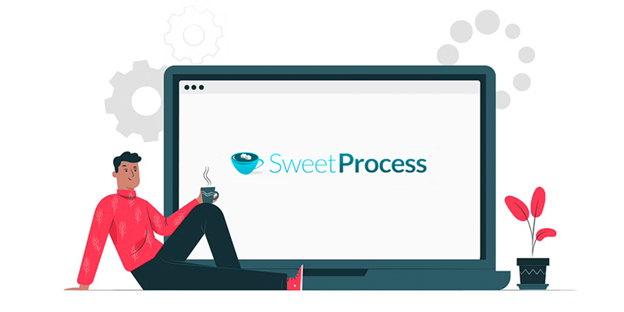
How your processes and procedures are documented affects your effectiveness as an organization. Poor documentation of these affects how your employees deliver output. The ease of accessing these documents will determine whether your employees use them or not. This is why your choice of documenting software is important.
SweetProcess is a procedure and process documenting software suitable for any kind of company. It is a user-friendly app that provides easy solutions to common documenting problems faced by organizations. Its features include:
- Easy documentation process: Complexly documented processes will hardly be accessed by your employees. SweetProcess makes documentation easy. You can add videos, photos and links to more information.
- Decentralized knowledge base: Have all your business processes in one place for easy access and continuous updates. A disorganized work environment stifles productivity. SweetProcess gets rid of that.
- Fast employee onboarding and training: Employee onboarding equips employees with the needed skills to carry out their responsibilities. Many organizations either waste time on the training or cannot provide sufficient training. SweetProcess makes it easy to train new employees, giving them the confidence they need to do their jobs.
SweetProcess does all of these and more. You’re guaranteed a smoother flow in your work environment when you use this software. Not sure if you can take our word for it? Sign up for a free trial of SweetProcess. No credit card is required. Also, see how other companies are making use of this tool to turn their businesses around.
Craig Bayer is the CEO at Optiable, a company that helps law firms streamline their workflows by leveraging technology. Craig had a documentation problem and tried to resolve it by manually documenting processes and procedures. He achieved this but he saw it was neither effective nor efficient.
Going through these documented processes was hard for his employees and left him with no options, so he was forced to micromanage his teams. Processes and procedures were documented but no one was looking at them. Craig couldn’t let employees work without knowing what they were doing. Micromanaging them was a lose-lose for him and his employees. They didn’t like that, and he wasn’t getting much of his work done.
Discovering SweetProcess made him realize the importance of systemizing operations. Talk about using the right technology! With the company’s processes and procedures in a place that is easy to access and use, the employees are more efficient and perform their duties practically unaided.
As the head of operations at Onogo (an e-commerce business that offers a wide range of consumer products), Florinela Serban had the duty of streamlining the business processes. The business grew and so did demands from customers and partners. Keeping up with this rise without a solid business structure proved tough.
A structure was needed so people know what they should be doing to deliver what is required of them. SweetProcess was an effective workflow software that was able to manage the changes at Onogo.
SweetProcess was able to equip their new hires for efficiency by creating process awareness. Having this tool meant they were prepared for any big changes to come in the future.
Thomas Parker’s duties at Stone & Wood included monitoring quality assurance and smooth operations. It is a brewing company that takes pride in producing quality beer for its consumers. Employees had to abide by regulatory standards in their industry to avoid being sanctioned, which means they had to follow the process strictly. This was a problem.
Employees working with outdated procedures could alter the entire production which led to a waste of resources and a questioning of their efficiency. Did they have a system for documenting processes and procedures? They did, but it wasn’t effective. When a process got updated, there was no way to be sure that employees had gone through it after the strenuous job of updating it in the first place.
Using SweetProcess as its process and procedures documenting software saw the company become more efficient at its production. Updating processes became easy, and employees knew when an update had been made. It made the company more effective and efficient.
Conclusion
Organizational effectiveness is the process by which an organization effectively meets its goals without reducing quality. It involves different parts of your organization; output alone doesn’t determine its effectiveness. To get to the point where your organization can boast of effectiveness, it will take determination and hard work. Effectiveness is an ongoing process and there’s always something new happening you’ll want to adapt to. Having the right tools at your disposal simplifies the effectiveness process. Our free downloadable checklist gives a step-by-step guide on how your organization can improve its effectiveness.
